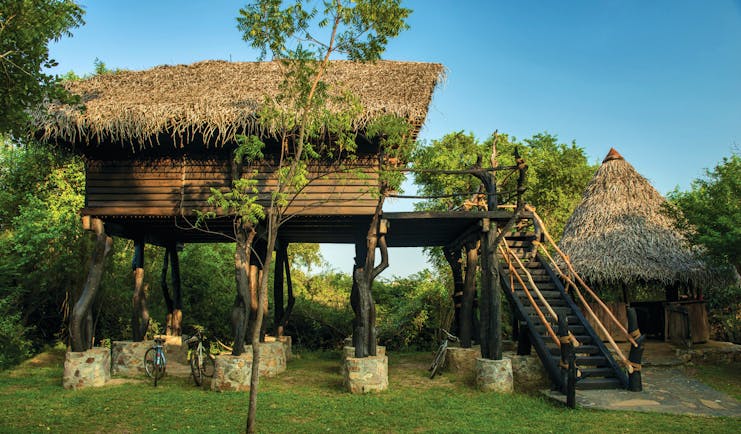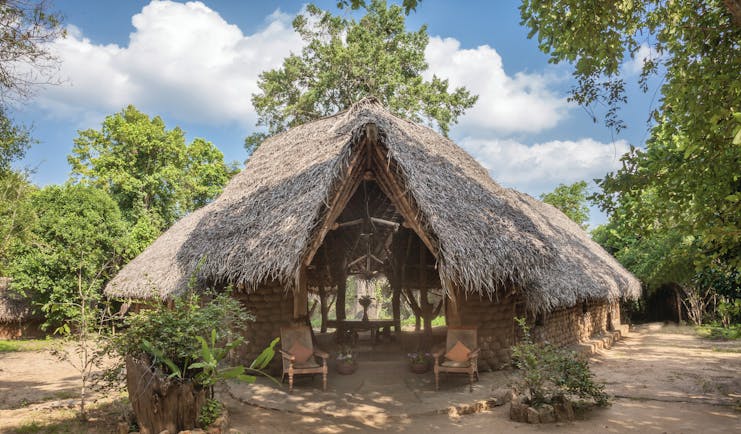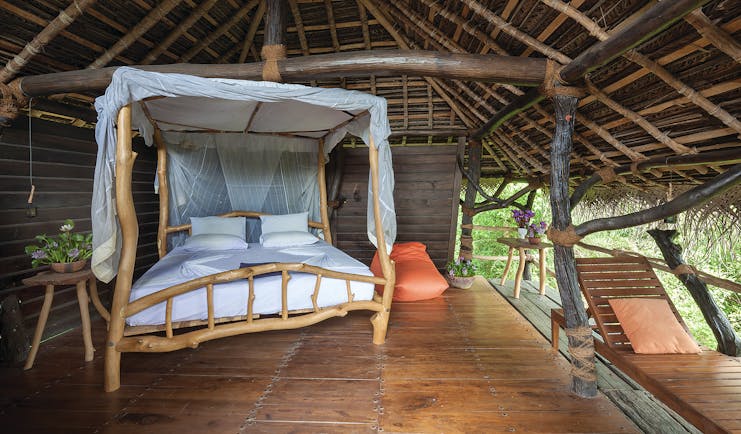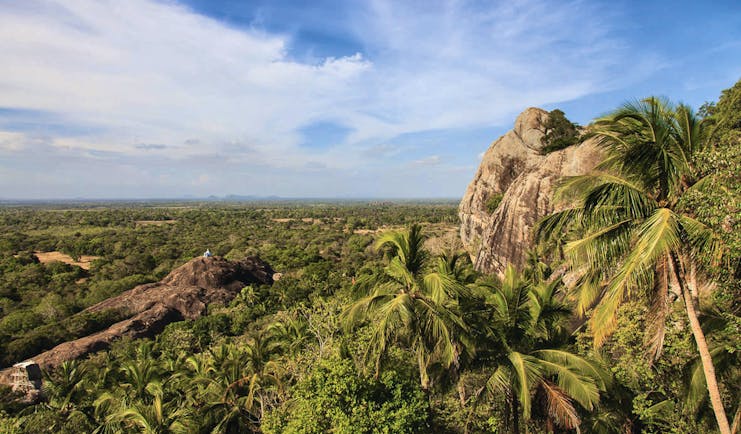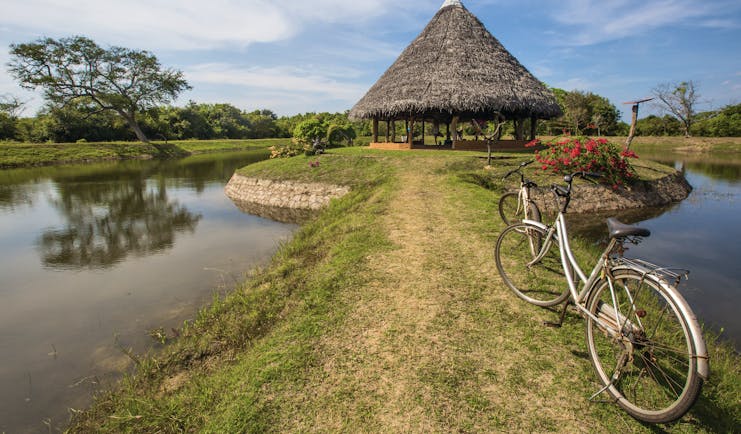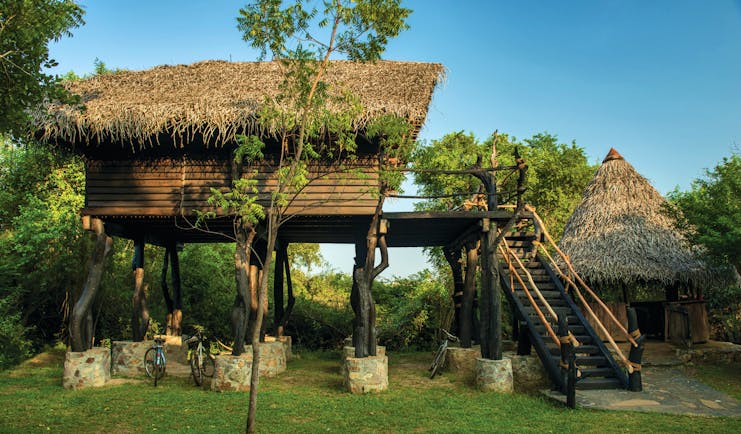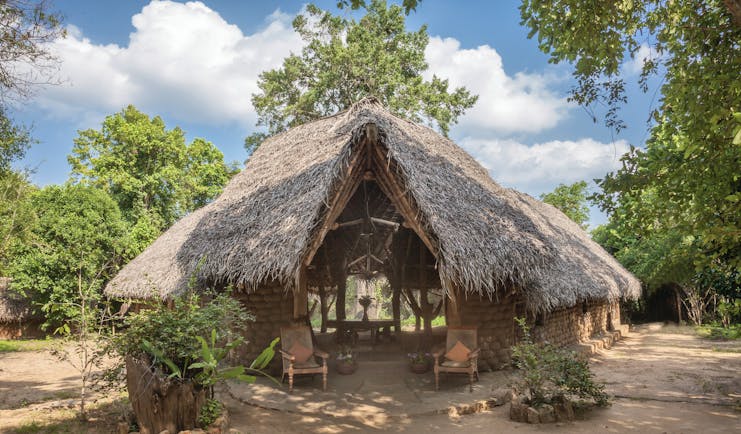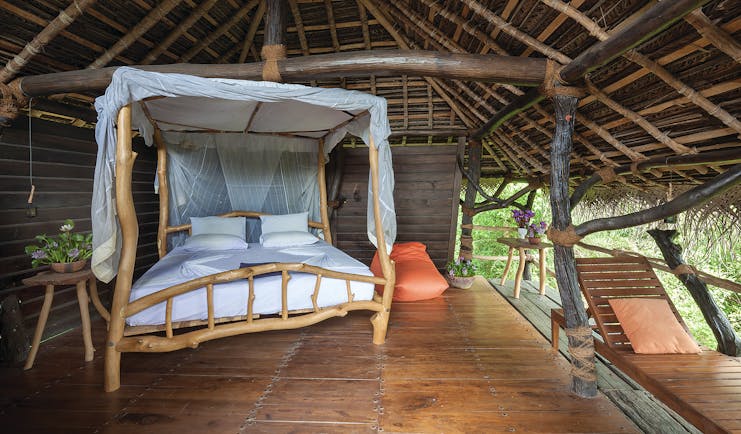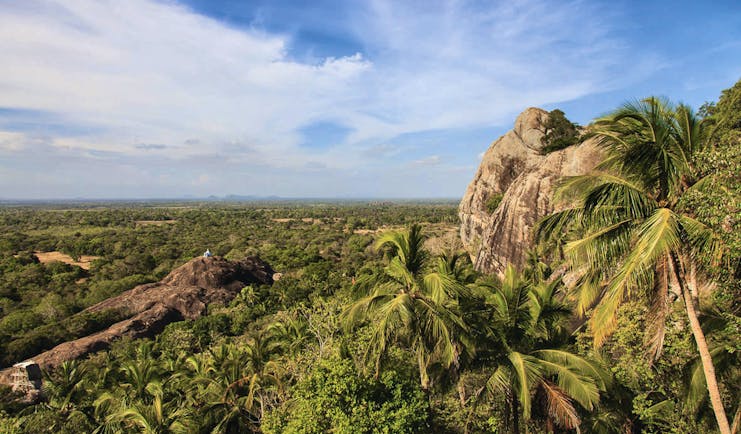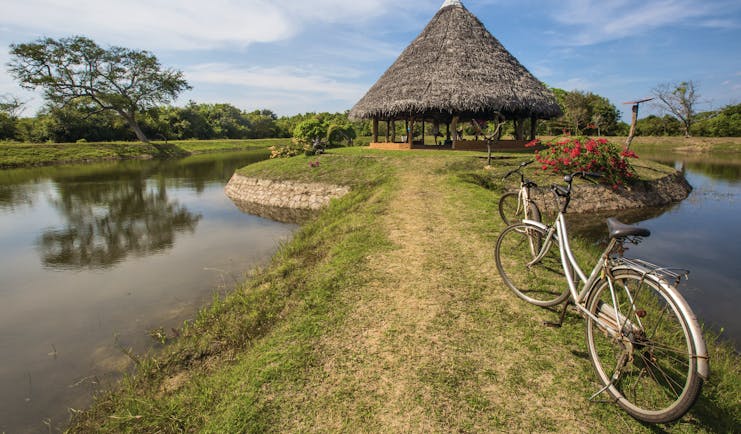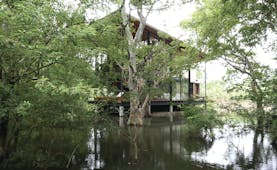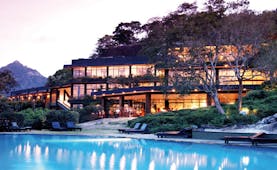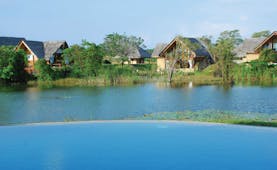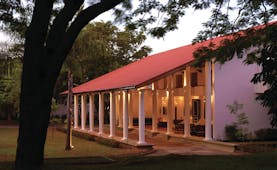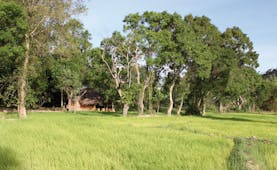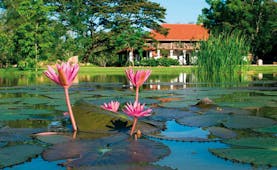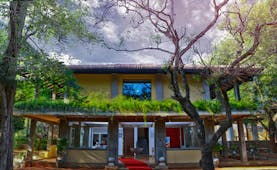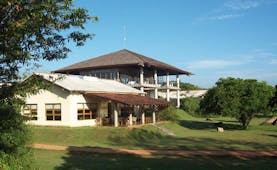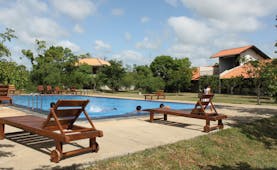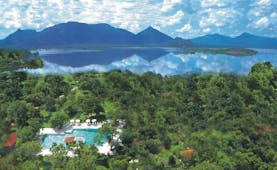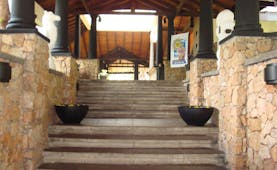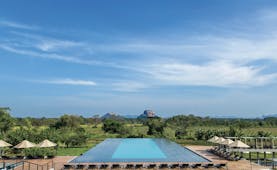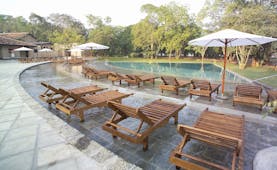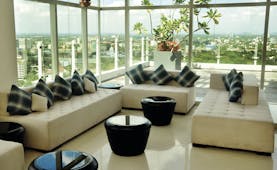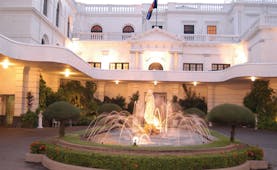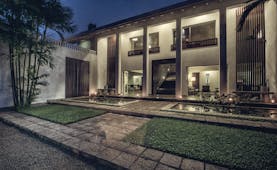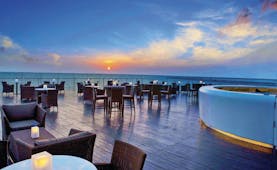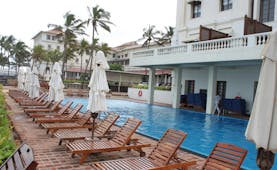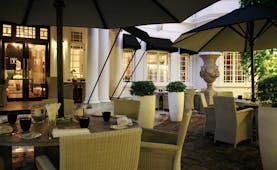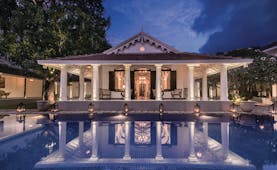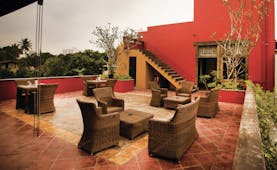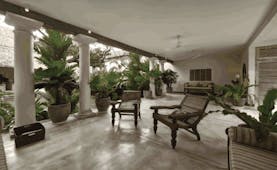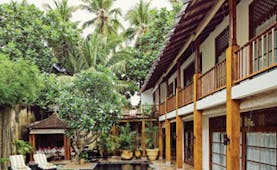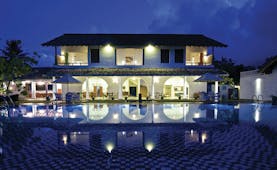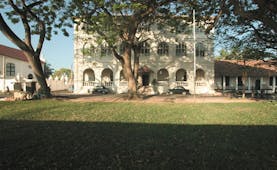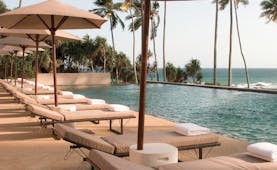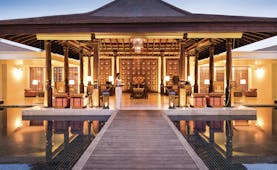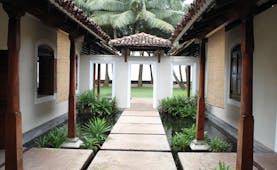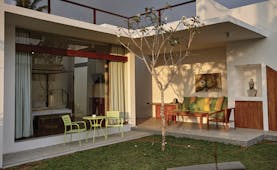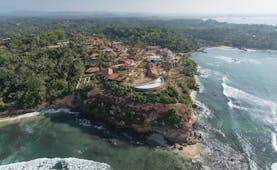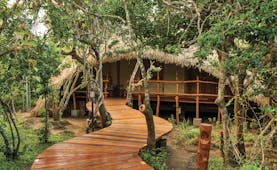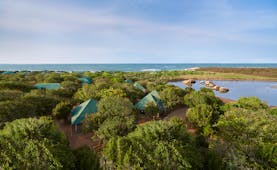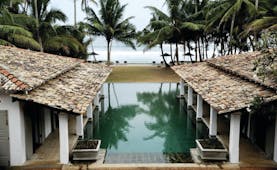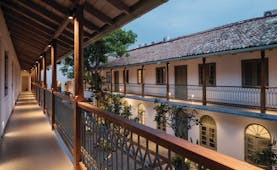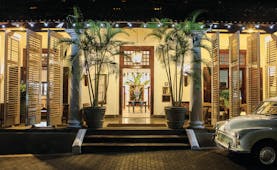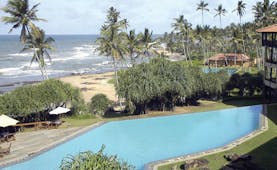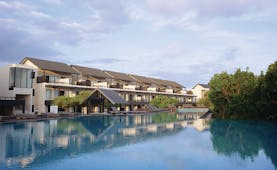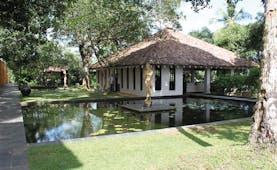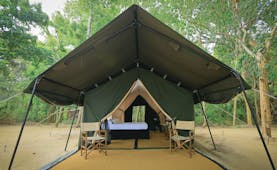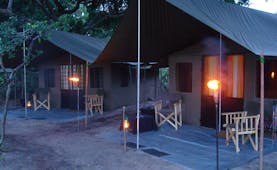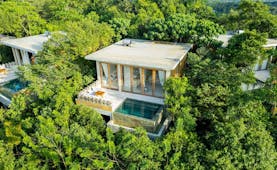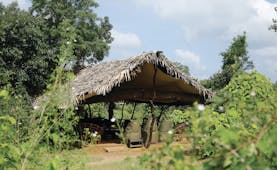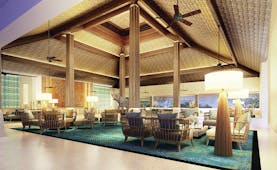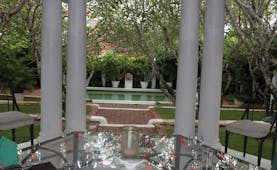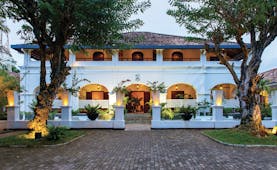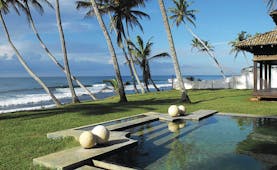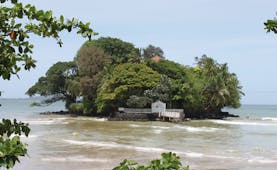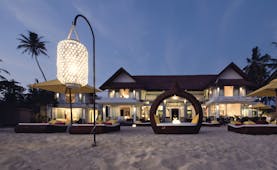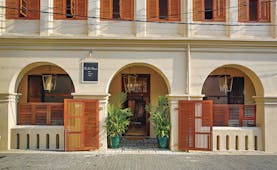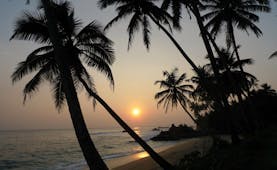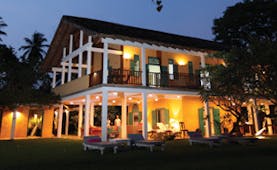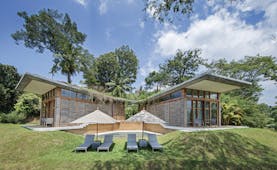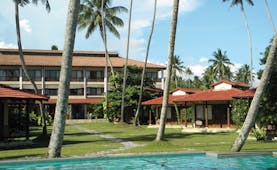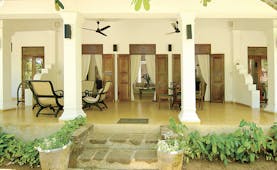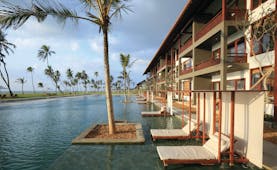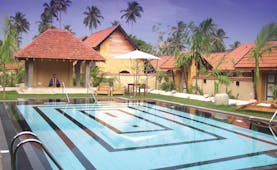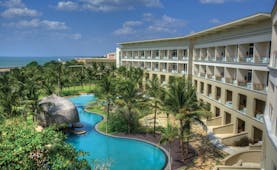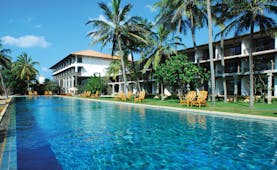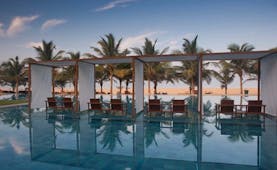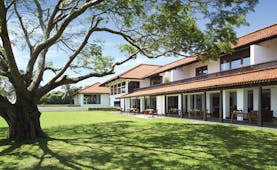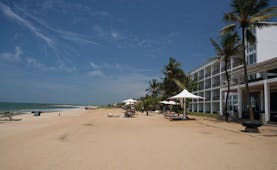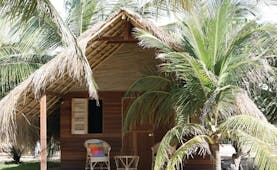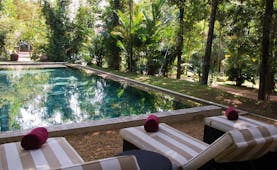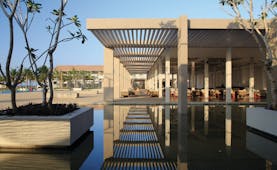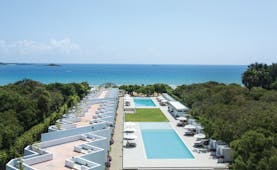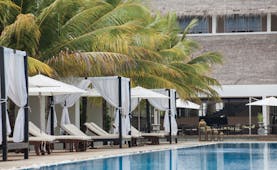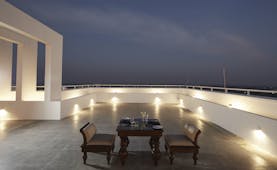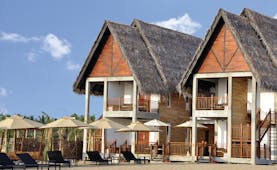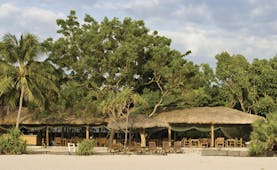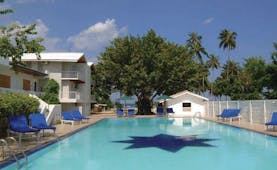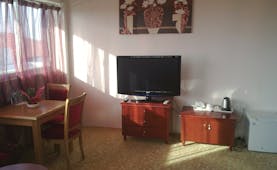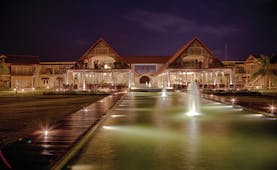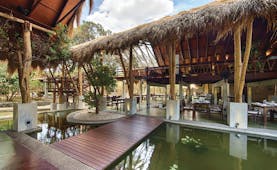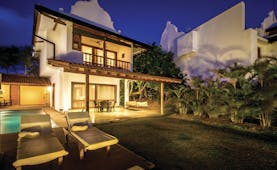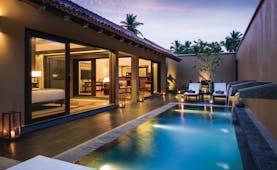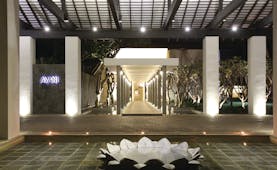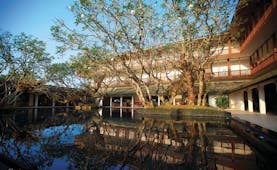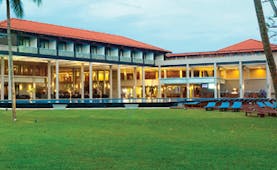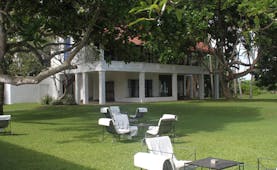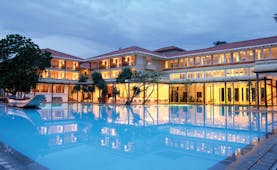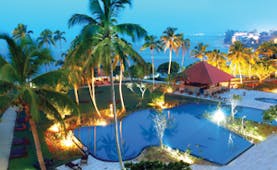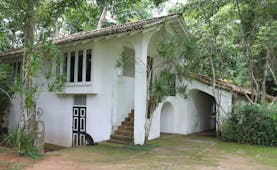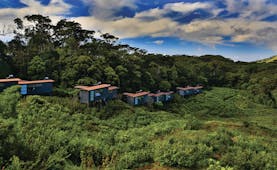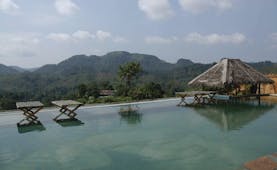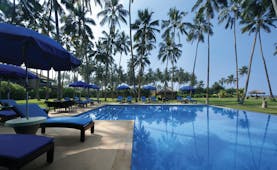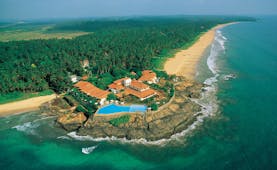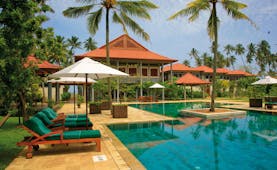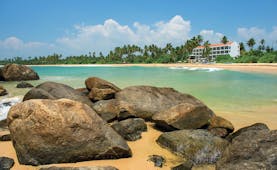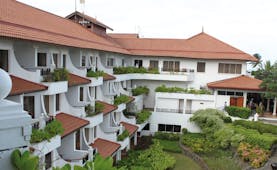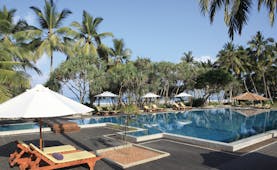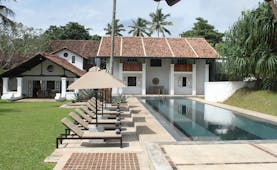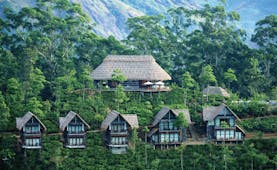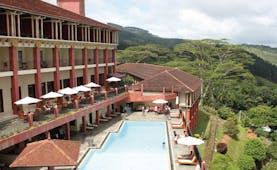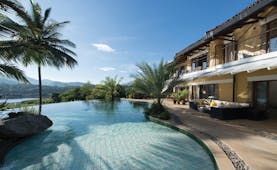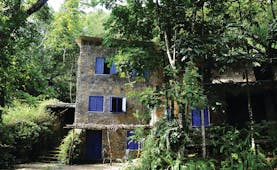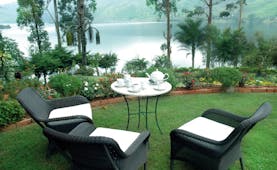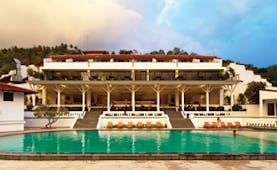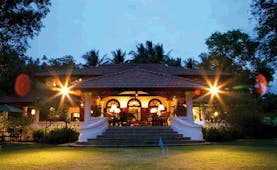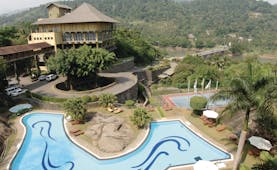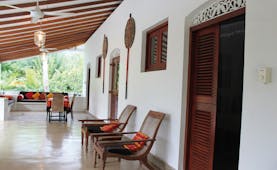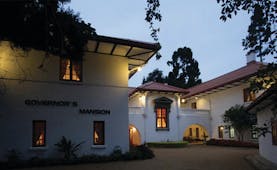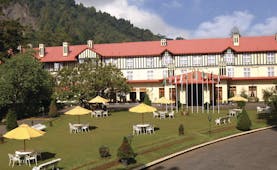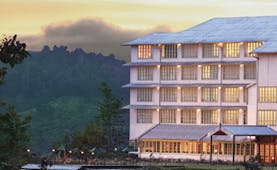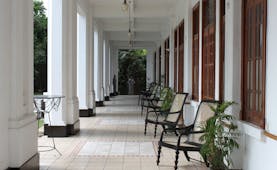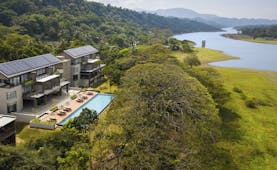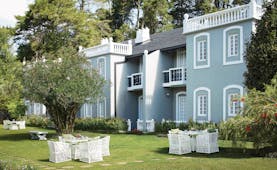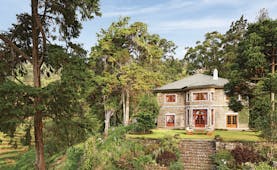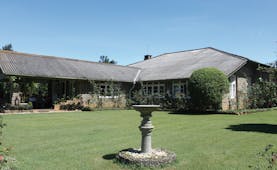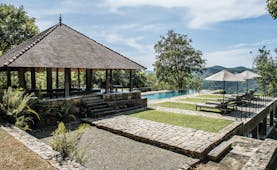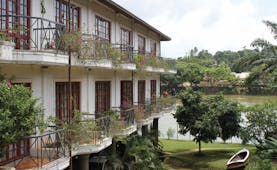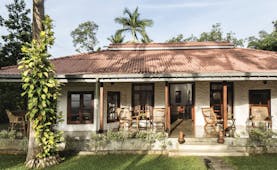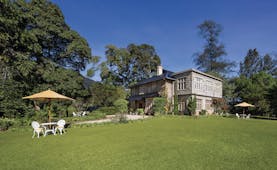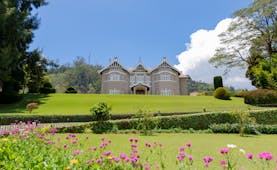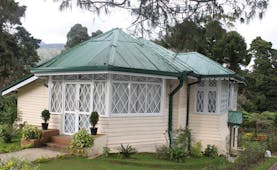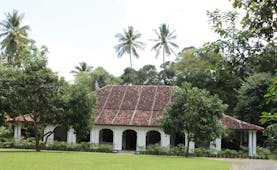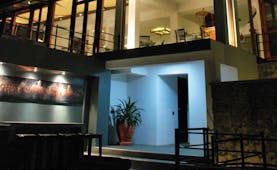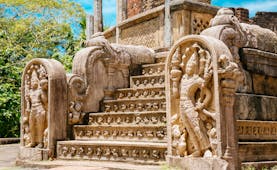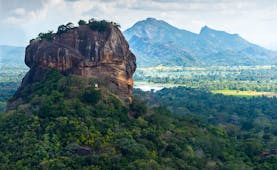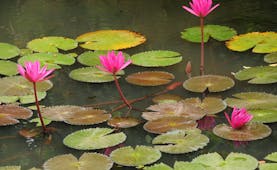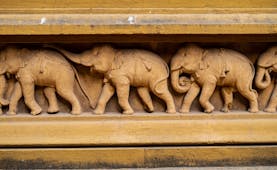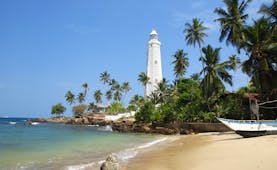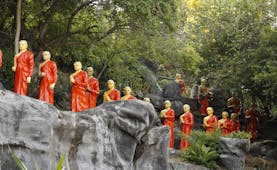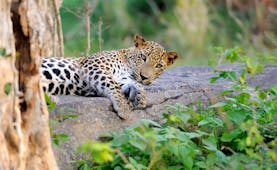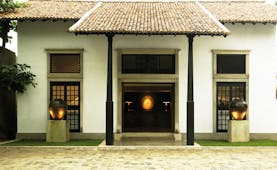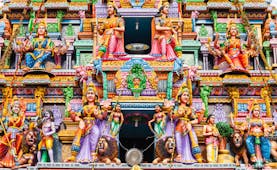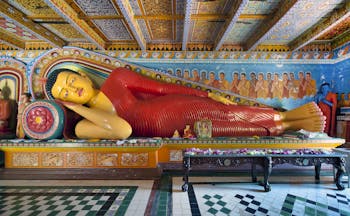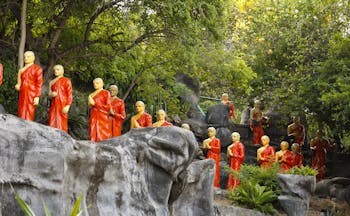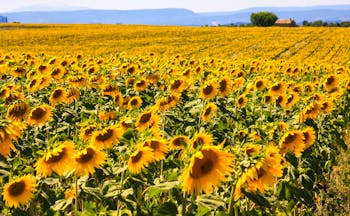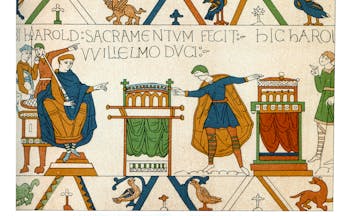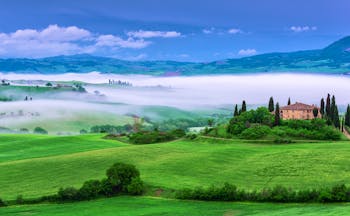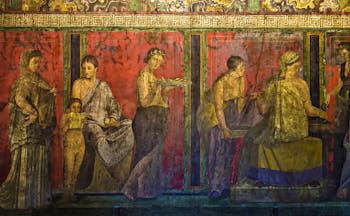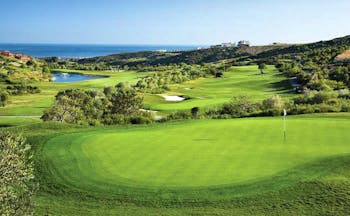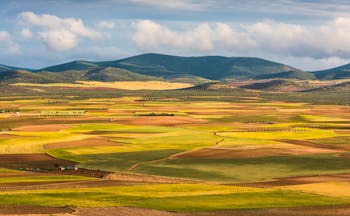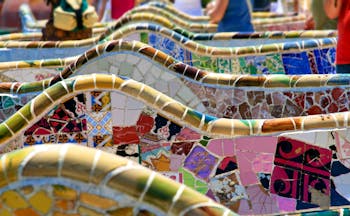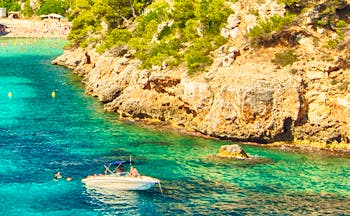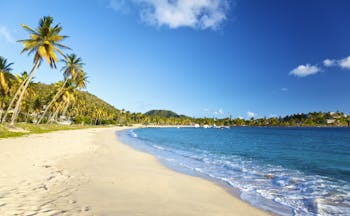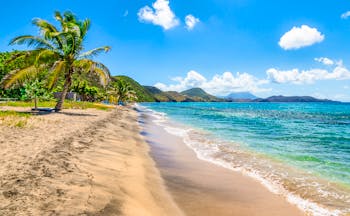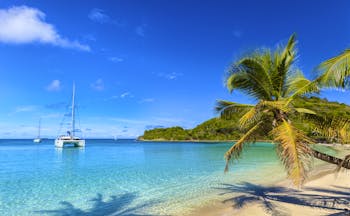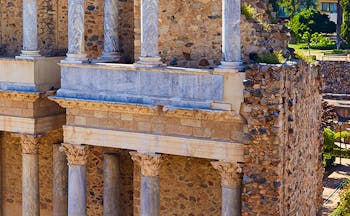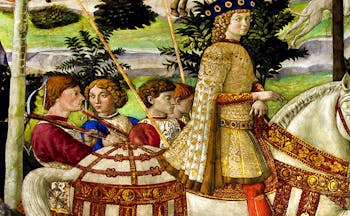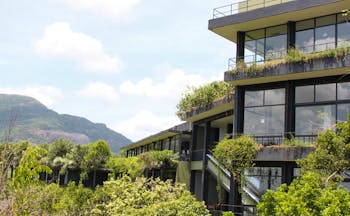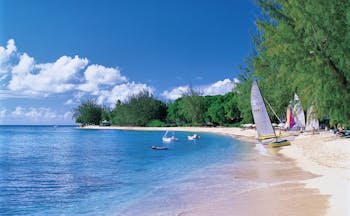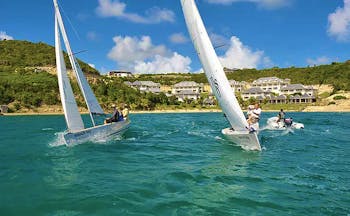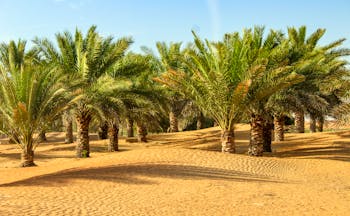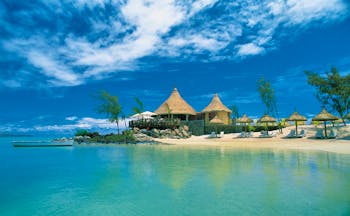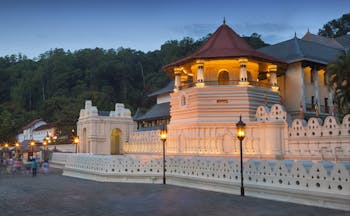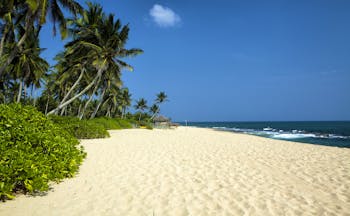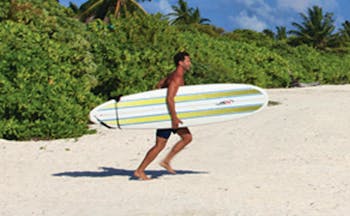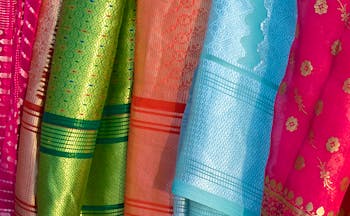Luxury bespoke holidays and tours to the Mudhouse, Anamanduwa
Facts in brief
Official star rating Small luxury boutique
Location In the countryside, the hotel is approximately 80-miles north of Colombo
Closest airport Colombo airport
Distance from airport About 2 hours drive
Hotel facilities and services
Dining, excursions arranged to nearby places of interest.
Out and about nearby
UNESCO world heritage site at Anuradhapura, Tabowa Lake, Elephant corridors, Yapahuwa and Pandurasnuwara ancient capitals with rock carving, mangrove and lagoon boat trips, cycle rides, bird watching at Anawilundawa bird sanctuary, Puttalam lagoon, Wilpattu National Park (birds, leopards, elephants, wild buffalo, crocodiles and sloth bear), Thigala rock inscription, rock temples at Mulegama. Cycling and boat trips available nearby.
We had a wonderful holiday which exceeded our expectations. Great hotels with a good itinerary. We wouldn't hesitate to use your services again.Mrs J, June 2025
Holiday price guide Sample prices are per person based on two people sharing a Hut room for 7 nights
From about
£2,300
Holiday Code EXH1172
The prices displayed here are a guide only. Each holiday price will be tailor-made at the time of booking to reflect all actual costs including up-to-date special offers.
Call us on 01392 441245
Luxury bespoke holidays and tours to the Mudhouse, Anamanduwa
We had a wonderful holiday which exceeded our expectations. Great hotels with a good itinerary. We wouldn't hesitate to use your services again.Mrs J, June 2025
Holiday price guide Sample prices are per person based on two people sharing a Hut room for 7 nights
From about
£2,300
Holiday Code EXH1172
The prices displayed here are a guide only. Each holiday price will be tailor-made at the time of booking to reflect all actual costs including up-to-date special offers.
Call us on 01392 441245
Luxury bespoke holidays and tours to the Mudhouse, Anamanduwa
The journey and how you get there
For a holiday to The Mudhouse in Sri Lanka, our clients fly to Colombo, usually with Sri Lankan Airways on a direct flight from London Heathrow (or with Emirates from other UK airports via Dubai). This hotel is 2 hours and 45 minutes' drive from Colombo airport and is usually stayed at as part of a tailor-made touring holiday accompanied by a driver-guide.
We had a wonderful holiday which exceeded our expectations. Great hotels with a good itinerary. We wouldn't hesitate to use your services again.Mrs J, June 2025
Holiday price guide Sample prices are per person based on two people sharing a Hut room for 7 nights
From about
£2,300
Holiday Code EXH1172
The prices displayed here are a guide only. Each holiday price will be tailor-made at the time of booking to reflect all actual costs including up-to-date special offers.
Call us on 01392 441245
Luxury bespoke holidays and tours to the Mudhouse, Anamanduwa
About Cultural Triangle
An Expressions tailor-made holiday to the Sri Lanka's Cultural Triangle gives visitors the opportunity to experience a melting pot of heritage, culture and wildlife in the central dry, which is home to a wealth of UNESCO world heritage sites and beautiful landscapes, still rich in wildlife and natural habitats. It is essential to visit the Cultural Triangle during a holiday in Sri Lanka. Most visitors spend a day or two visiting the cultural sites as part of a touring holiday around Sri Lanka, yet we think this area is so rich in culture, local life and wildlife that it can also merit a week’s stay, discovering the culture and enjoying the natural environment. The local people here lead a largely agrarian life often centring round rice cultivation. Today’s landscape on these flat, dry, red earth plains is dotted with vast tracts of water - fields of rice paddies and water lilies and the ancient reservoirs known as ‘tanks’ - interspersed with forests and smallholdings, solitary rock mountains, temples and villages. Wild elephants are often sighted inside (and sometimes outside) the national parks, whilst monkeys, swamp hens, cormorants and mynah birds are commonly seen. This area is considered to be the cradle of Sri Lanka’s Buddhist civilisation as we know it today. It is also the epicentre of Sri Lankan Ayurveda, the science centrifugal to a healthy life – if you want to find a really authentic, traditional Ayurvedic doctor, this is the place to be. There is a great range of high-quality hotels in the Cultural Triangle - we have carefully selected hotels throughout the area which we believe to be the best at what they do. They all enjoy tranquil and beautiful rural settings and range from luxury boutique hotels such as Ulagalla Resort, to eco-friendly resorts such as Jetwing Vil Uyana. There are many highlights of Sri Lanka's Cultural Triangle including four UNESCO World Heritage Sites which between them telling the fascinating story of Sri Lanka's Civilisation. As well as Sigiriya Rock Fortress, the Cave Temples of Dambulla, the Mediaeval capital of Polonnaruwa and the sacred city of Anuradhapura there are numerous other places of interest which are well worth a visit.
Highlights of the Cultural Triangle
Sigiriya Rock Fortress; Dambulla Cave Temples; Polonnaruwa – ruins of the ancient capital; Anuradhapura – sacred city; Wildlife safari in Minneriya National Park (or Kaudulla National Park); Elephant rides/treks; Birdwatching on the ‘tanks’; Hot air balloon ride; Cycle ride – local village life; Ayurveda health treatments, massages, herbal steam beds and aromatic baths; Ritigala monastery ruins (walking required); Aukana Buddha; Mihintale; the story of Buddhism; the story of Ayurveda. Day trip or continue on to Kandy, visiting spice gardens, batik workshops, Temple of the Tooth, Kandy market, city centre, view from hills, workshops for woodcarving, brass and musical instruments.
Cultural highlights of the Cultural Triangle
Four of Sri Lanka's eight UNESCO World Heritage Sites are in what is popularly known as the Cultural Triangle. Between them they tell a fascinating story of Sri Lanka’s civilisation. The 5th century Sigiriya Rock Fortress is one of Sri Lanka’s most awe-inspiring archaeological sites and its prime tourist attraction, well worth climbing to see the majestic views from the summit. Nearby are the Dambulla Cave Temples, each cave filled with murals and gilded statues depicting the life of the Buddha. The well-preserved ruins of Polonnaruwa, the 12th century capital, tell a story of Buddhism, royalty, kinship, war and power. Highlights are the Royal Palace, Council Chamber and four graceful Buddha statues of Gal Vihara. The ancient city of Anuradhapura is a vast archaeological site of palaces, monasteries, temples and dagobas, mostly in ruins, although some have been resorted. This was one of the grandest monastic cities that the world has ever seen. Other sights worth seeing are Mihintale Sanctuary, known as the ‘cradle of Buddhism in Sri Lanka’; Ritigala, ruins of a 9th century monastery hidden amongst dense forest; and Minneriya National Park, a park filled with wildlife including elephants, buffalo, wild boar and crocodiles.
Festivals in the Cultural Triangle
The Buddhist festivals: monthly on Poya (full moon) days, especially Vesak (May) and Poson (June). Poson marks the introduction of Buddhism to Sri Lanka by Arahat Maha Mahinda, son of Asoka of India at Mihintale in 3rd century BC. July to October – the Elephant Gathering: during this season in the evenings, hundreds of wild elephants gather along the banks of the Minneriya Tank.
Climate in the Cultural Triangle
As the climate is very hot with an average temperature of 30° C, it is best to do sightseeing and activities in the early mornings and late afternoons, with time to relax at the hotel, eat or travel in air-conditioning at the height of the day. Average humidity is 60%, with very little rainfall most of the year - most of the rain falls between November and February when the North-east monsoon prevails.

